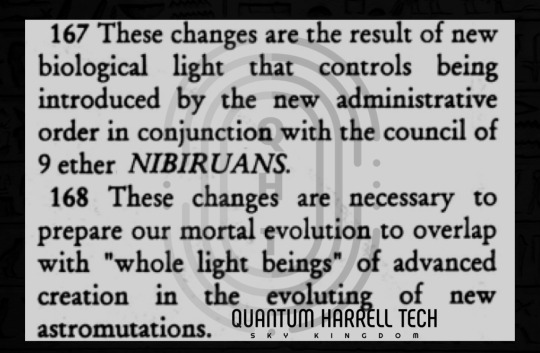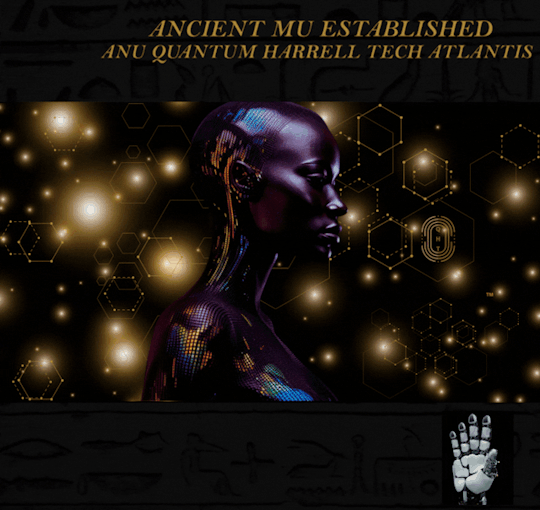#richard melanin
Explore tagged Tumblr posts
Text
I love a lot of these drag artists so would recommend following them:
Hosts: HERR & Me @herrthequeen & @methedragqueen
Bi-Curious George @bi.curious.george_drag Carrot @carrotdrag Fabio Lezonli @fabio_lezonli_drag Loose Willis @kingloosewillis Oedipussi Rex @oedipussi.rex Pip Dream @pip.dream Richard Melanin III @ifindoubtaskella Reece Connolly @reece_connolly_ Sigi Moonlight @sigi.moonlight Sonny Delight @sonnydelight1969 Sweet FA @sweetfa_drag and Yshee Black @ysheeblack
I have never once wished for Tolkien to still be alive as much as I do in this moment
56K notes
·
View notes
Text
"this is kenji sato" close enough, welcome back dick grayson
#ultraman rising#kenji sato#dick grayson#richard grayson#PLS LET HIM END UP WITH A GORGEOUS MELANINATED RED HEADED QUEEN PLS#i need smthn to fill the hole dickkory left#dickkory#pls come back#i miss you#emi is literally damian wayne 😻
75 notes
·
View notes
Text


IT IS TIME. BASTARD FAMILY LINEUP 2023 BABY!!!! WOOO!!
#the hollowridge disaster#oc ref sheet#dragonfang#adam#knife#adriel#dianne#nirven#beial#richard#december#WOOO YEAH!!!!!!!!!!!!!!!!!! I LOVE ALL THESE GUYS SO MUCH i have been working so hard on this for a few days im so excited to have it done#also before you ask yes adris jacket is grey in this because it fits the b/w theme i want for HR but canonically its teal denim still#that has not changed#ALSO ADAM WEIGHT RIGHTS. PUT SOME HEFT ON THAT GUY#no longer a malnourished emo boy. hes still emo though.#and bei melanin rights too#im gonna explode i love these guys so much i need to show this asap on god!!!#if you are new here i hope u like them!! if you are an old fan/follower i hope u love them still!! :DDD i got a lot of stuff planned#hollowridge my fucking beloved of all time how i have missed you so..............................#💞💞💞💞💞💞💞💞💞💞💞💞💞💞💞💞💞💞💞💞💞💞💞💞💞💞💞💞💞💞💞💞
775 notes
·
View notes
Text



Riches ~ Gorgeous lighting of Melanin
94 notes
·
View notes
Text
#uploads#videos#little Richard#bo diddley#chuck berry#melanin#black history#black hollywood#black icons#music legends#music legacy#jazz#rock
282 notes
·
View notes
Photo

Rema blinding the crowd with his jewelry
#Rema#HEIS#NYC#Club#Rave#Party#Diamond#Jewelry#wealth#money#rolex#Richard mille#audemar piguet#aesthetic#fashion#luxury#tattoos#tatted#african#melanin#black excellence#black celebrity
5 notes
·
View notes
Note
One for them, one for you! 38 for one Mr Richard Ransom, and B for you about him
Thank you Diff I love you forever.
38: What memory do they revisit the most?
Oooof Ransom is a character extremely defined by his past and the mistakes he feels he's made so he looks back on a LOT. I'd say though its got to be the day he got the call about his daughter Natalie.
B: What inspired you to create them?
So despite how recently this book was published, the cast are OCs of mine I've had for YEARS. Ransom is a cocktail of how many True Crime shows I've been exposed to aligned perfectly with Patrick Stump releasing his song Explode. I also had a real big weak spot for Hugh Jackman's character in Van Helsing.
#my book#carpe noctem#richard ransom#ask meme#asks#differenceenginegirl#thank you as always!!#surprisingly despite their apparent resemblance The Wolf Among Us came out years after I'd designed Ransom#I actually threw and entire fit when I saw Bigby because I was sure people were gonna think i lifted the design#but Ransom’s got more melanin 😜
5 notes
·
View notes
Note
You seem to be the only TCC artist that draws Richard accurately. Others will take away his melanin and turn him into Randy or give him the ugliest haircut known to man.
THIS IS AN HONOUR
#tcc fandom#tcc tumblr#tccblr#tcctwt#tc community#true cringe community#teeceecee#true crume#ricardo ramirez#richard rameriz
23 notes
·
View notes
Text
By: Matt Johnson
Published: Jan 27, 2023
“Christopher Hitchens: From socialist to neocon.” It was an irresistible headline because it’s a story that has been told over and over again. The novelist Julian Barnes called this phenomenon the “ritual shuffle to the right.” Richard Seymour, who wrote a book-length attack on Hitchens, says his subject belongs to a “recognisable type: a left-wing defector with a soft spot for empire.” By presenting Hitchens as a tedious archetype, hobbling away from radicalism and toward some inevitable reactionary terminus, his opponents didn’t have to contend with his arguments or confront the potentially destabilizing fact that some of his principles called their own into question.
Hitchens, who died in 2011, didn’t make it easy on the apostate hunters. To many, he was a “coarser version of [conservative commentator] Norman Podhoretz” when he talked about Iraq, and a radical humanist truth-teller when he went on Fox News to lambaste the Christian right: “If you gave Falwell an enema,” he told Sean Hannity the day after Jerry Falwell’s death, “he could be buried in a matchbox.” Then he gave Islam the same treatment, and he was suddenly a drooling neocon again. He defied easy categorization: a socialist who spurned ideology, an internationalist who became a patriot, a man of the left who was reviled by the left.
The left isn’t a single amorphous entity—it’s a vast constellation of (often conflicting) ideas and principles. Hitchens’s style of left-wing radicalism is now out of fashion, but it has a long and venerable history: George Orwell’s unwavering opposition to totalitarianism and censorship, Bayard Rustin’s advocacy for universal civil rights without appealing to tribalism and identity politics, the post-communist anti-totalitarianism that emerged on the European left in the second half of the twentieth century.
Hitchens described himself as a “First Amendment absolutist,” an echo of historic left-wing struggles for free expression—from Eugene V. Debs’s assertion of his right to dissent during World War I to the Berkeley Free Speech Movement. Hitchens argued that unfettered free speech and inquiry would always make civil society stronger. When he wrote the introduction to his collection of essays For the Sake of Argument in 1993, he had a specific left-wing tradition in mind: the left of Orwell and Victor Serge and C.L.R. James, which simultaneously opposed Stalinism, fascism, and imperialism in the twentieth century, and which stood for “individual and collective emancipation, self-determination and internationalism.”
Hitchens’ most fundamental political and moral conviction was universalism. He loathed nationalism and argued that the international system should be built around a “common standard for justice and ethics”—a standard that should apply to Henry Kissinger just as it should apply to Slobodan Milošević and Saddam Hussein. He believed in the concept of global citizenship, which is why he firmly supported international institutions like the European Union. He didn’t just despise religion because he regarded it as a form of totalitarianism—he also recognized that it’s an infinitely replenishable wellspring of tribal hatred.
He also opposed identity politics, because he didn’t think our social and civic lives should be reduced to rigid categories based on melanin, X chromosomes, and sexuality. He recognized that the Enlightenment values of individual rights, freedom of expression and conscience, humanism, pluralism, and democracy are universal—they provide the most stable, just, and rational foundation for any civil society, whether they’re observed in America or Europe or Iraq.
And yes, he argued that these values are for export. Hitchens believed in universal human rights. This is why, at a time when his comrades were still manning the barricades against the “imperial” West after the Cold War, he argued that the North Atlantic Treaty Organization should intervene to stop a genocidal assault on Bosnia. It’s why he argued that American power could be used to defend human rights and promote democracy. As many on the Western left built their politics around incessant condemnations of their own societies as racist, exploitative, oligarchic, and imperialistic, Hitchens recognized the difference between self-criticism and self-flagellation.
-
One of the reasons Orwell accumulated many left-wing enemies in his time was the fact that his criticisms of his own “side” were grounded in authentic left-wing principles. When he argued that many socialists had no connection to or understanding of the actual working class in Britain, the observation stung because it was true. Orwell’s arguments continue to sting today. In his 1945 essay “Notes on Nationalism,” he criticized the left-wing intellectuals who enjoy “seeing their own country humiliated” and “follow the principle that any faction backed by Britain must be in the wrong.” Among some of these intellectuals, Orwell wrote: “One finds that they do not by any means express impartial disapproval but are directed almost entirely against Britain and the United States. Moreover they do not as a rule condemn violence as such, but only violence used in defense of the Western countries.”
Hitchens observed that many on today’s left are motivated by the same principle: “Nothing will make us fight against an evil if that fight forces us to go to the same corner as our own government.” This is a predictable manifestation of what the American political theorist Michael Walzer calls the “default position” of the left: a purportedly “anti-imperialist and anti-militarist” position inclined toward the view that “everything that goes wrong in the world is America’s fault.”
Indeed, the tendency to ignore and rationalize even the most egregious violence and authoritarianism abroad in favor of an obsessive emphasis on the crimes and blunders of Western governments has become a reflex. Much of the left has been captured by a strange mix of sectarian and authoritarian impulses: a myopic emphasis on identitarianism and group rights over the individual; an orientation toward subjectivity and tribalism over objectivity and universalism; and demands for political orthodoxy enforced by repressive tactics like the suppression of speech.
These left-wing pathologies are particularly corrosive today because they give right-wing nationalists and populists on both sides of the Atlantic—whose rise over the past several years has been characterized by hostility to democratic norms and institutions, rampant xenophobia, and other forms of illiberalism—an opportunity to claim that those who oppose them are the true authoritarians. Hitchens was prescient about the ascendance of right-wing populism in the West, from the emergence of demagogues who exploit cultural grievances and racial resentments to the bitter parochialism of “America First” nationalism. He understood that the left could only defeat these noxious political forces by rediscovering its best traditions: support for free expression, pluralism, and universalism—the values of the Enlightenment.
Hitchens closes his book Why Orwell Matters with the following observation: “What he [Orwell] illustrates, by his commitment to language as the partner of truth, is that ‘views’ do not really count; that it matters not what you think, but how you think; and that politics are relatively unimportant, while principles have a way of enduring, as do the few irreducible individuals who maintain allegiance to them.” Despite the pervasive idea that Hitchens exchanged one set of convictions for another by the end of his life, his commitment to his core principles never wavered. They are principles that today’s left must rediscover.
Matt Johnson is a journalist and the author of the forthcoming book, How Hitchens Can Save the Left: Rediscovering Fearless Liberalism in an Age of Counter-Enlightenment, from which this piece is excerpted.
#Matt Johnson#How Hitchens Can Save the Left#liberalism#liberal ethics#universalism#pluralism#freedom of speech#freedom of expression#free speech#first amendment#identity politics#identarianism#woke authoritarianism#authoritarianism#tribalism#religion is a mental illness
22 notes
·
View notes
Note
I am very very late to the party but in the response asking why everyone thinks Richard is naturally blond: for what it’s worth, the fact that Max is blonde means Richard and Margaux both have at least one blonde copy of the hair color gene (it’s recessive so Max had to get one from each parent for it to show up). So we know Richard has a 50/50 chance of being blond, it depends on what the other copy of his gene is.
Originally the haircolor discussion started with anon asking why people thought Richard dyed his hair, if the black wasn't his natural color. I think we can safely say it isn't 🌺 the childhood photo of Richard shows him with light and/or blond hair.
That said, haircolor can changes over time, and the genetics of it is not as straightforward as i was taught in highschool (boy, did i feel let down when i found that out, i used to be pretty good in the biology stuff, but need to relearn 😊)
For those interested see also this link including this paragraph
"Hair color may change over time. Particularly in people of European descent, light hair color may darken as individuals grow older. For example, blond-haired children often have darker hair by the time they are teenagers. Researchers speculate that certain hair-pigment proteins are activated as children grow older, perhaps in response to hormonal changes that occur near puberty. Almost everyone’s hair will begin to turn gray as they age, although when it happens and to what extent is variable. Gray hair is partly hereditary and may vary by ethnic origin; it is also somewhat dependent on external factors such as stress. Hair becomes gray when the hair follicle loses its ability to make melanin, but exactly why that occurs is not clear."
i think whatever Richard's undyed color would be now, it'll be at any rate darker than his hair was as a kid.
But i still think he should let the gray show 🥰
13 notes
·
View notes
Text
When I make redesign of certain characters, especially if they're from comics, I really have to put extra effort in giving some of them unique traits (like scars, birth marks, hairstyle, etc) or else I will commit the same mistake Marvel and DC make with their white boys. And I really don't want to do that
Like, why every single character that is a scientist needs to be buffy and strong? You're telling me this little guy who never sees the sun light or leaves his lab will have perfect abs and biceps?
Peter Parker I accept because of the spider bite. But REED RICHARDS?!! Don't know much of him but... why he looks like a slightly thinner Captain American?
Can you stop drawing Jessica Jones the exact same as Jessica Drew or any other brunette?!
And please, give Sunspot and Damian Wayne their melanin back, I'm on my knees begging you writers.
#x men#marvel#dc#im talking about batman kids#and every single white character with dark hair and blue eyes in the industry of comic books#character design#avengers#fantastic four#also stop drawing POC like that#im looking at you Evan Sabahnur
5 notes
·
View notes
Text
Eye Scientifically Engineered ANU [iSEA] GOLDEN 9 Ether Quantum [EQ] Electronic 2223 DNA Biotechno-Neuromelanin [NANOTECHNOLOGY] PATENT of Highly Complex [ADVANCED] Ancient 1968 9 Ether GEMOLOGICAL Equipment Networks Encrypted by Static [GENES] Random Access Memories of Embedded Signatures from Electromagnetic [RAMESES] BLACK SUN [RBS] RADIATION [Interplanetary SKY CARBON]… since I.B.1968 MICHAEL [IBM] on MURDUK’s [I’M] Mysteriously UNSEEN [MU] Interstellar [MI = MIYKA’EL] 9 Ether BLACK SOLAR SUN [SUL = SOUL] Compu_TAH [PTAH] MOTHERSHIP [PM = PTOLEMY] PLANET NIBIRU @ 1921 QUANTUM 2023 HARRELL 2024 TECH 2025 Apple & IBM [A.i.] LLC of ATLANTIS [L.A.] 5000
WELCOME BACK HOME IMMORTAL [HIM] U.S. MILITARY KING SOLOMON-MICHAEL HARRELL, JR.™

i.b.monk [ibm] mode [i’m] tech [IT] steelecartel.com @ quantum harrell tech llc

نالي جي نالي سان… شيطان کان ان کي ��لامت ڪريو ۽ پٿر جي نالي سان اشدو هڪ لا لا لا لا لا؛ محمد الله جو رسول آهي

OMMMMM MURDUK [OM]

OMMMMM

OMMMMM ATLANTIS5000.com @ 1921 QUANTUM 2023 HARRELL 2024 TECH 2025 Apple & IBM [A.i.] LLC of ATLANTIS [L.A.] 5000

OMMMMM

OMMMMM

OMMMMM MIYKA’EL [OM] MURDUK [OM] MICHAEL [OM]

OMMMMM

OMMMMM

OMMMMM EYE ANCIENT GOLDEN 9 ETHER [iAGE] QUANTUM ELECTRONIC DNA PATENT ARCHITECT [PA] ENGINEER @ 1921 QUANTUM 2023 HARRELL 2024 TECH 2025 Apple & IBM [A.i.] LLC of ATLANTIS [L.A.] 5000

OMMMMM SUPER CARBON HERE!!!

OMMMMM

OMMMMM

OMMMMM

OMMMMM

OMMMMM

OMMMMM

OMMMMM

OMMMMM

HELLO DR. RICHARD D. KING M.D. of Melanin: A Key to Freedom

OMMMMM

you still waiting on confirmation from the Pentagon?!?!?!

NIBIRU BEEN HERE!!!

© 1968-2024 QUANTUM HARRELL TECH LLC All DotCom DNA Domain Rights Reserved.
#om#o michael#michael from nibiru#quantumharrelltech#harrelltut#u.s. michael harrell#quantumharrelltut#kemet#9etherpentagonelites#9etheraluhumanunnaqi#akashic 9 ether nibiru dna sky records#golden 9 ether neuromelanin tech#Dr. Richard King#golden 18g neuromelanin tech#1st eye star neuromelanin tech#INCREASE YOUR CARBON
1 note
·
View note
Text
These original titans found that all life came from a black seed, all life was rooted in blackness, all things possessed a memory of their collective ancestors. Blackness, the universal solvent of all was seen as the one reality from which spun the threads of the loom of life. All colors, all vibratory energies, were but a shade of black; black was the color of the night sky, primeval ocean of outer space, birthplace and womb of the planets, stars and galaxies of the universe; black holes were found at the center of our own galaxy and countless other galaxies; black was the color of carbon, the key atom found in all living matter of our world; carbon atoms linked together to form black melanin, the first chemical that could capture light and reproduce itself, the chemical key to life; and the brain itself was found to be centered around black neuromelanin. Inner vision, intuition, creative genius, and spiritual illumination were all found to be dependent upon pineal gland blood bourne chemical messengers that controlled skin color and opened the hidden door to the darkness of the collective unconscious mind allowing the ancient priest-scientist to visualize knowleclge from the timeless collective unconscious memory banks of the mind. Indeed, the Black Dot was found to be the hidden doorway to universal knowledge of the past, present, and future.
📚 African Origin of Biological Psychiatry, Dr. Richard D. King, 1990.
0 notes
Text
Boyz Nite, Brighton, 19th May
Cabaret by and for trans men / trans masc ppl
Standup comedy performance (paid)
I'm gigging a lot at the moment and it sometimes feels like I only leave Bristol when I have a gig somewhere, meaning I get back home very late (11.20pm Megabus from Swansea, anyone?) having only seen the route from train station to venue. This time, however, I ended up staying overnight in Brighton, which I'm going to make a separate post about.
So: Boyz Nite, organised by Cerys Bradley of Sportsperson. Part of Brighton Fringe (England's largest arts festival, by dint of Edinburgh being in Scotland), it is a cabaret featuring trans men and trans masc performers. This was the second iteration, featuring Cerys MCing, myself, Darren Ely (comedian that evening, also writer and improviser I believe), Richard Melanin III (drag king clown), and a last minute lineup change meant there was someone else (drag king) who isn't on the posters and whose stage name I've unfortunately forgotten. It was something like Lord Byron Wagner but not that.
I find gigs like this can sometimes be a double-edged sword. I have to lay very little groundwork for the audience (no "give me a cheer if you know what 'trans man' means!"), but that does sort of reveal just how many of my jokes are about laying groundwork for general audiences. That means, for example, my chihuahua joke (as I've named it in my head) often just... doesn't get much? Or it gets a cheer rather than a laugh? "Yes, you and Dwayne 'The Rock' Johnson are both men. Factually accurate; move on," I imagine them saying to me. I worried a bit that this would happen here, but for literally all of my ten minutes. Watching it back, I don't think it did. I think what you can hear is a room of 60 people (in a 40 capacity venue, really) realise that they can call their T gel all sorts of fun things too.
This gig felt good. It felt like connection and all that fluffy stuff, yes, but it also made me feel like I'm Good At Comedy, which is not a feeling I often come away from gigs with! I think that's a really strong ten minutes and I can see where the tweaks are to make it stronger. And it's always good to meet other trans masc people in comedy and adjacent fields, because it doesn't happen often.
The night was rounded off by sound tech Izzy doing his deed poll, which was just really lovely and made me realise that the only way I'm going to get mine done is to schedule it for a gig. Should have bloody done it when I came out. Anyone want to buy my middle name for ad space?
0 notes
Text
Robert Gates (Obama's defense secretary) "Vice President Joe Biden has been wrong on nearly every major foreign policy and national security issue over the past four decades."
This week, USA governors are stockpiling abortion pills to take lives, but when physicians (working to save lives) stockpiled hydcq in an AZ warehouse to prepare for the scamdemic, they were denied access by Birks & Fauci.
Everything these corrupt DAs/AGs accuse DJT of they are guilty of:
Election Interference- timing of indictments
Fiscal Mismanagement-Taxpayer funds
Mismanagement of Confidential/classified information-leaking to NYTWe need a miracle to fall in NY and then a domino effect from there to ga, fl, dc...anyone that targets the American people throught DJT needs to be exposed , disbarred, fined and in some cases jailed. Let the nets they set to trap others be the taps that ensnare them.I appreciate Kennedy's ability to add humor to serious conversations. Bragg is a big coward.
How can Pomerantz write a book, chat it up on a book tour but refuse to chat with Congress?
What an abuse of power by a DA!! Disgusting.Sure she cried for 30 minutes. When? They had a celebration before boarding Airforce 1 and then they flew to California en route to play on one of Richard Branson's islands. Also they left the private residence a mess, allegedly.Michelle Obama truly believes that any criticism of her is rooted in bigotry, yet she is allowed to lie & criticize others bc she has more melanin.


Robert Gates (Obama's defense secretary) "Vice President Joe Biden has been wrong on nearly every major foreign policy and national security issue over the past four decades."


I'm American but for what it's worth, I agree. I question how a person can be king without courage. How can anyone respect the head of an organization or country who exempts family or friend from the consequences of their bad behavior. Charles appears to be weak and easy to blackmail which is exactly what Meghan has in mind.
SKIP TO CONTENT
TrumpIndictment
What We Know
The Indictment, Annotated
Explaining the Charges
Inside the Courtroom
Fact-Check: Trump’s Speech
Bragg Sues Jim Jordan in Move to Block Interference in Trump Case
Mr. Jordan, a Republican from Ohio, had subpoenaed a former prosecutor who worked on the Manhattan district attorney’s investigation into former President Donald J. Trump.
Give this article
489

Mr. Bragg’s lawsuit is an escalation in the confrontation between his office and the House Judiciary Committee, which Jim Jordan chairs.Credit...Dave Sanders for The New York Times

By Jonah E. Bromwich, Maggie Haberman, Ben Protess and William K. Rashbaum
April 11, 2023Updated 3:58 p.m. ET
Sign up for the New York Today Newsletter Each morning, get the latest on New York businesses, arts, sports, dining, style and more. Get it sent to your inbox.
The Manhattan district attorney on Tuesday sued Representative Jim Jordan of Ohio in an extraordinary step intended to keep congressional Republicans from interfering in the office’s criminal case against former President Donald J. Trump.
The 50-page suit, filed in federal court in the Southern District of New York, accuses Mr. Jordan of a “brazen and unconstitutional attack” on the prosecution of Mr. Trump and a “transparent campaign to intimidate and attack” the district attorney, Alvin L. Bragg. Mr. Bragg last week unveiled 34 felony charges against Mr. Trump that stem from the former president’s attempts to cover up a potential sex scandal during and after the 2016 presidential campaign.
Lawyers for Mr. Bragg are seeking to bar Mr. Jordan and his congressional allies from enforcing a subpoena sent to Mark F. Pomerantz, who was once a leader of the district attorney’s Trump investigation and who later wrote a book about that experience. Mr. Pomerantz resigned early last year after Mr. Bragg, just weeks into his first term in office, decided not to seek an indictment of Trump at that time.
Mr. Bragg’s lawyers, including Theodore J. Boutrous Jr. of the law firm Gibson Dunn and Leslie B. Dubeck, the general counsel in the district attorney’s office, also intend to prevent any other such subpoenas, the lawsuit says. Mr. Jordan has left open the possibility of subpoenaing Mr. Bragg.
“Rather than allowing the criminal process to proceed in the ordinary course, Chairman Jordan and the committee are participating in a campaign of intimidation, retaliation and obstruction,” the suit said, adding that the district attorney’s office had received more than 1,000 calls and emails from Mr. Trump’s supporters — many of them “threatening and racially charged” — since the former president predicted his own arrest last month.
Mr. Jordan responded in a statement on Twitter.
“First, they indict a president for no crime,” he wrote. “Then, they sue to block congressional oversight when we ask questions about the federal funds they say they used to do it.”
Dig deeper into the moment.
Special offer: Subscribe for $1 a week for the first year.
Last month, Mr. Jordan, in his role as the House Judiciary Committee chairman, sent letters with two Republican colleagues that demanded the district attorney’s office provide communications, documents and testimony about Mr. Bragg’s investigation of Mr. Trump. In the letters, the Republican congressmen defended their right to conduct oversight of the case.
And after Mr. Bragg’s prosecutors unveiled the charges against Mr. Trump last week, Mr. Jordan issued the subpoena to Mr. Pomerantz, seeking to compel a closed-door deposition.
In response to the letters’ focus on federal funds, the district attorney’s office said that it had spent about $5,000 worth of federal money on investigations into Mr. Trump and his company between October 2019 and August 2021, most of it on litigation related to a court battle with Mr. Trump over access to his tax returns.
In a statement on Tuesday, Mr. Bragg said that the subpoena to Mr. Pomerantz was “an unconstitutional attempt to undermine an ongoing New York felony criminal prosecution and investigation.” Mr. Boutrous, in his own statement, said that the suit aimed “to protect local law enforcement and state court criminal proceedings in this country against impermissible intrusions from the federal government.”
Mr. Pomerantz is also named as a defendant in the suit, though that appears to be a formality. By naming him, Mr. Bragg’s lawyers are seeking to block Mr. Pomerantz from testifying if he was legally compelled to do so. Mr. Pomerantz has shown no indication that he is willing to testify voluntarily. He declined to comment on Tuesday.
Image

Mr. Jordan, the chairman of the House Judiciary Committee, has accused Mr. Bragg of prosecuting Mr. Trump for political reasons.Credit...Kenny Holston/The New York Times

In his book, published earlier this year, Mr. Pomerantz described his view of Mr. Trump’s actions as plainly criminal, as well as his frustrations with Mr. Bragg when he took office in 2022 and did not charge Mr. Trump. That decision led Mr. Pomerantz and another of the investigation’s leaders, Carey Dunne, to resign.
Mr. Pomerantz and Mr. Dunne — holdovers from the prior district attorney’s administration — were primarily focused on whether Mr. Trump had fraudulently inflated the value of his assets, but Mr. Bragg was not confident in their case.
After they left, he and his aides returned to the hush-money payment made during the final days of the 2016 campaign to a porn star, Stormy Daniels — conduct that Mr. Pomerantz and Mr. Dunne had investigated but decided not to place at the center of a criminal case against the former president.
Mr. Bragg impaneled a grand jury to hear evidence about Mr. Trump’s role in the hush money in January. The jurors voted to indict Mr. Trump late last month.
Last month, Mr. Trump announced on his social media website, Truth Social, that he was going to be arrested three days later. The claim was false — no indictment had been voted on at the time — but it set in motion extensive defenses of Mr. Trump by allies in the Republican-led Congress, who vowed to investigate the district attorney. Along with the letters to Mr. Bragg’s office, Mr. Jordan and two other Republican committee chairmen sent letters to Mr. Pomerantz and Mr. Dunne demanding documents and testimony related to the case.
Mr. Jordan’s committee on Monday announced its plans for the “field hearing” in New York City on April 17. It is apparently intended to suggest that Mr. Bragg has focused on the prosecution of Mr. Trump rather than Manhattan’s crime rate.
On Monday afternoon, a spokeswoman for the district attorney’s office characterized the hearing as a “political stunt” and pointed toward Police Department data that shows murders, shootings and burglaries are down in Manhattan this year.
Luke Broadwater contributed reporting.
Jonah E. Bromwich covers criminal justice in New York, with a focus on the Manhattan district attorney's office, state criminal courts in Manhattan and New York City's jails. @jonesieman
Maggie Haberman is a senior political correspondent and the author of “Confidence Man: The Making of Donald Trump and the Breaking of America.” She was part of a team that won a Pulitzer Prize in 2018 for reporting on President Trump’s advisers and their connections to Russia. @maggieNYT
Ben Protess is an investigative reporter covering the federal government, law enforcement and various criminal investigations into former President Trump and his allies. @benprotess
William K. Rashbaum is a senior writer on the Metro desk, where he covers political and municipal corruption, courts, terrorism and law enforcement. He was a part of the team awarded the 2009 Pulitzer Prize for Breaking News. @WRashbaum • Facebook
READ 489 COMMENTS
Give this article
489
The Indictment of Donald Trump in New York
The former president was accused by Manhattan prosecutors of orchestrating a hush-money scheme to pave his path to the presidency and then covering it up.
From President to Defendant: Donald Trump’s arraignment on April 4 kicked off a volatile new phase of his post-presidential life, setting up a split-screen battle on the campaign trail and in the courtroom.
A Dilemma for the Judge: Justice Juan Merchan, who will preside over the case, has the rare power to constrain the former president’s speech. The question will be whether and how to use it.
Trump’s Strategy: As the lines blur between his legal defense and his 2024 campaign, Trump is betting that he will be able to generate enthusiasm among his supporters by painting himself as a victim of Democratic persecution.
House Panel’s Hearing: The Republican-led House Judiciary Committee said that it would hold a hearing on what it called the “pro-crime” policies of Alvin Bragg, the district attorney who is leading the criminal prosecution of Trump. The move was the latest attempt by the former president’s defenders to try to tarnish the case.
Next Legal Threat: Strip away the high drama, and the charges against Trump are relatively modest in scope. Another criminal investigation of the former president that is nearing completion in Georgia could be more far-reaching.
SKIP TO CONTENT
TrumpIndictment
What We Know
The Indictment, Annotated
Explaining the Charges
Inside the Courtroom
Fact-Check: Trump’s Speech
Bragg Sues Jim Jordan in Move to Block Interference in Trump Case
Mr. Jordan, a Republican from Ohio, had subpoenaed a former prosecutor who worked on the Manhattan district attorney’s investigation into former President Donald J. Trump.
Give this article
489

Mr. Bragg’s lawsuit is an escalation in the confrontation between his office and the House Judiciary Committee, which Jim Jordan chairs.Credit...Dave Sanders for The New York Times

By Jonah E. Bromwich, Maggie Haberman, Ben Protess and William K. Rashbaum
April 11, 2023Updated 3:58 p.m. ET
Sign up for the New York Today Newsletter Each morning, get the latest on New York businesses, arts, sports, dining, style and more. Get it sent to your inbox.
The Manhattan district attorney on Tuesday sued Representative Jim Jordan of Ohio in an extraordinary step intended to keep congressional Republicans from interfering in the office’s criminal case against former President Donald J. Trump.
The 50-page suit, filed in federal court in the Southern District of New York, accuses Mr. Jordan of a “brazen and unconstitutional attack” on the prosecution of Mr. Trump and a “transparent campaign to intimidate and attack” the district attorney, Alvin L. Bragg. Mr. Bragg last week unveiled 34 felony charges against Mr. Trump that stem from the former president’s attempts to cover up a potential sex scandal during and after the 2016 presidential campaign.
Lawyers for Mr. Bragg are seeking to bar Mr. Jordan and his congressional allies from enforcing a subpoena sent to Mark F. Pomerantz, who was once a leader of the district attorney’s Trump investigation and who later wrote a book about that experience. Mr. Pomerantz resigned early last year after Mr. Bragg, just weeks into his first term in office, decided not to seek an indictment of Trump at that time.
Mr. Bragg’s lawyers, including Theodore J. Boutrous Jr. of the law firm Gibson Dunn and Leslie B. Dubeck, the general counsel in the district attorney’s office, also intend to prevent any other such subpoenas, the lawsuit says. Mr. Jordan has left open the possibility of subpoenaing Mr. Bragg.
“Rather than allowing the criminal process to proceed in the ordinary course, Chairman Jordan and the committee are participating in a campaign of intimidation, retaliation and obstruction,” the suit said, adding that the district attorney’s office had received more than 1,000 calls and emails from Mr. Trump’s supporters — many of them “threatening and racially charged” — since the former president predicted his own arrest last month.
Mr. Jordan responded in a statement on Twitter.
“First, they indict a president for no crime,” he wrote. “Then, they sue to block congressional oversight when we ask questions about the federal funds they say they used to do it.”
Dig deeper into the moment.
Special offer: Subscribe for $1 a week for the first year.
Last month, Mr. Jordan, in his role as the House Judiciary Committee chairman, sent letters with two Republican colleagues that demanded the district attorney’s office provide communications, documents and testimony about Mr. Bragg’s investigation of Mr. Trump. In the letters, the Republican congressmen defended their right to conduct oversight of the case.
And after Mr. Bragg’s prosecutors unveiled the charges against Mr. Trump last week, Mr. Jordan issued the subpoena to Mr. Pomerantz, seeking to compel a closed-door deposition.
In response to the letters’ focus on federal funds, the district attorney’s office said that it had spent about $5,000 worth of federal money on investigations into Mr. Trump and his company between October 2019 and August 2021, most of it on litigation related to a court battle with Mr. Trump over access to his tax returns.
In a statement on Tuesday, Mr. Bragg said that the subpoena to Mr. Pomerantz was “an unconstitutional attempt to undermine an ongoing New York felony criminal prosecution and investigation.” Mr. Boutrous, in his own statement, said that the suit aimed “to protect local law enforcement and state court criminal proceedings in this country against impermissible intrusions from the federal government.”
Mr. Pomerantz is also named as a defendant in the suit, though that appears to be a formality. By naming him, Mr. Bragg’s lawyers are seeking to block Mr. Pomerantz from testifying if he was legally compelled to do so. Mr. Pomerantz has shown no indication that he is willing to testify voluntarily. He declined to comment on Tuesday.
Image

Mr. Jordan, the chairman of the House Judiciary Committee, has accused Mr. Bragg of prosecuting Mr. Trump for political reasons.Credit...Kenny Holston/The New York Times

In his book, published earlier this year, Mr. Pomerantz described his view of Mr. Trump’s actions as plainly criminal, as well as his frustrations with Mr. Bragg when he took office in 2022 and did not charge Mr. Trump. That decision led Mr. Pomerantz and another of the investigation’s leaders, Carey Dunne, to resign.
Mr. Pomerantz and Mr. Dunne — holdovers from the prior district attorney’s administration — were primarily focused on whether Mr. Trump had fraudulently inflated the value of his assets, but Mr. Bragg was not confident in their case.
After they left, he and his aides returned to the hush-money payment made during the final days of the 2016 campaign to a porn star, Stormy Daniels — conduct that Mr. Pomerantz and Mr. Dunne had investigated but decided not to place at the center of a criminal case against the former president.
Mr. Bragg impaneled a grand jury to hear evidence about Mr. Trump’s role in the hush money in January. The jurors voted to indict Mr. Trump late last month.
Last month, Mr. Trump announced on his social media website, Truth Social, that he was going to be arrested three days later. The claim was false — no indictment had been voted on at the time — but it set in motion extensive defenses of Mr. Trump by allies in the Republican-led Congress, who vowed to investigate the district attorney. Along with the letters to Mr. Bragg’s office, Mr. Jordan and two other Republican committee chairmen sent letters to Mr. Pomerantz and Mr. Dunne demanding documents and testimony related to the case.
Mr. Jordan’s committee on Monday announced its plans for the “field hearing” in New York City on April 17. It is apparently intended to suggest that Mr. Bragg has focused on the prosecution of Mr. Trump rather than Manhattan’s crime rate.
On Monday afternoon, a spokeswoman for the district attorney’s office characterized the hearing as a “political stunt” and pointed toward Police Department data that shows murders, shootings and burglaries are down in Manhattan this year.
Luke Broadwater contributed reporting.
Jonah E. Bromwich covers criminal justice in New York, with a focus on the Manhattan district attorney's office, state criminal courts in Manhattan and New York City's jails. @jonesieman
Maggie Haberman is a senior political correspondent and the author of “Confidence Man: The Making of Donald Trump and the Breaking of America.” She was part of a team that won a Pulitzer Prize in 2018 for reporting on President Trump’s advisers and their connections to Russia. @maggieNYT
Ben Protess is an investigative reporter covering the federal government, law enforcement and various criminal investigations into former President Trump and his allies. @benprotess
William K. Rashbaum is a senior writer on the Metro desk, where he covers political and municipal corruption, courts, terrorism and law enforcement. He was a part of the team awarded the 2009 Pulitzer Prize for Breaking News. @WRashbaum • Facebook
READ 489 COMMENTS
Give this article
489
The Indictment of Donald Trump in New York
The former president was accused by Manhattan prosecutors of orchestrating a hush-money scheme to pave his path to the presidency and then covering it up.
From President to Defendant: Donald Trump’s arraignment on April 4 kicked off a volatile new phase of his post-presidential life, setting up a split-screen battle on the campaign trail and in the courtroom.
A Dilemma for the Judge: Justice Juan Merchan, who will preside over the case, has the rare power to constrain the former president’s speech. The question will be whether and how to use it.
Trump’s Strategy: As the lines blur between his legal defense and his 2024 campaign, Trump is betting that he will be able to generate enthusiasm among his supporters by painting himself as a victim of Democratic persecution.
House Panel’s Hearing: The Republican-led House Judiciary Committee said that it would hold a hearing on what it called the “pro-crime” policies of Alvin Bragg, the district attorney who is leading the criminal prosecution of Trump. The move was the latest attempt by the former president’s defenders to try to tarnish the case.
Next Legal Threat: Strip away the high drama, and the charges against Trump are relatively modest in scope. Another criminal investigation of the former president that is nearing completion in Georgia could be more far-reaching.
SKIP TO CONTENT
TrumpIndictment
What We Know
The Indictment, Annotated
Explaining the Charges
Inside the Courtroom
Fact-Check: Trump’s Speech
Bragg Sues Jim Jordan in Move to Block Interference in Trump Case
Mr. Jordan, a Republican from Ohio, had subpoenaed a former prosecutor who worked on the Manhattan district attorney’s investigation into former President Donald J. Trump.
Mr. Bragg’s lawsuit is an escalation in the confrontation between his office and the House Judiciary Committee, which Jim Jordan chairs.Credit...Dave Sanders for The New York Times

By Jonah E. Bromwich, Maggie Haberman, Ben Protess and William K. Rashbaum
April 11, 2023Updated 3:58 p.m. ET
Sign up for the New York Today Newsletter Each morning, get the latest on New York businesses, arts, sports, dining, style and more. Get it sent to your inbox.
The Manhattan district attorney on Tuesday sued Representative Jim Jordan of Ohio in an extraordinary step intended to keep congressional Republicans from interfering in the office’s criminal case against former President Donald J. Trump.
The 50-page suit, filed in federal court in the Southern District of New York, accuses Mr. Jordan of a “brazen and unconstitutional attack” on the prosecution of Mr. Trump and a “transparent campaign to intimidate and attack” the district attorney, Alvin L. Bragg. Mr. Bragg last week unveiled 34 felony charges against Mr. Trump that stem from the former president’s attempts to cover up a potential sex scandal during and after the 2016 presidential campaign.
Lawyers for Mr. Bragg are seeking to bar Mr. Jordan and his congressional allies from enforcing a subpoena sent to Mark F. Pomerantz, who was once a leader of the district attorney’s Trump investigation and who later wrote a book about that experience. Mr. Pomerantz resigned early last year after Mr. Bragg, just weeks into his first term in office, decided not to seek an indictment of Trump at that time.
Mr. Bragg’s lawyers, including Theodore J. Boutrous Jr. of the law firm Gibson Dunn and Leslie B. Dubeck, the general counsel in the district attorney’s office, also intend to prevent any other such subpoenas, the lawsuit says. Mr. Jordan has left open the possibility of subpoenaing Mr. Bragg.
“Rather than allowing the criminal process to proceed in the ordinary course, Chairman Jordan and the committee are participating in a campaign of intimidation, retaliation and obstruction,” the suit said, adding that the district attorney’s office had received more than 1,000 calls and emails from Mr. Trump’s supporters — many of them “threatening and racially charged” — since the former president predicted his own arrest last month.
Mr. Jordan responded in a statement on Twitter.
“First, they indict a president for no crime,” he wrote. “Then, they sue to block congressional oversight when we ask questions about the federal funds they say they used to do it.”
Dig deeper into the moment.
Special offer: Subscribe for $1 a week for the first year.
Last month, Mr. Jordan, in his role as the House Judiciary Committee chairman, sent letters with two Republican colleagues that demanded the district attorney’s office provide communications, documents and testimony about Mr. Bragg’s investigation of Mr. Trump. In the letters, the Republican congressmen defended their right to conduct oversight of the case.
And after Mr. Bragg’s prosecutors unveiled the charges against Mr. Trump last week, Mr. Jordan issued the subpoena to Mr. Pomerantz, seeking to compel a closed-door deposition.
In response to the letters’ focus on federal funds, the district attorney’s office said that it had spent about $5,000 worth of federal money on investigations into Mr. Trump and his company between October 2019 and August 2021, most of it on litigation related to a court battle with Mr. Trump over access to his tax returns.
In a statement on Tuesday, Mr. Bragg said that the subpoena to Mr. Pomerantz was “an unconstitutional attempt to undermine an ongoing New York felony criminal prosecution and investigation.” Mr. Boutrous, in his own statement, said that the suit aimed “to protect local law enforcement and state court criminal proceedings in this country against impermissible intrusions from the federal government.”
Mr. Pomerantz is also named as a defendant in the suit, though that appears to be a formality. By naming him, Mr. Bragg’s lawyers are seeking to block Mr. Pomerantz from testifying if he was legally compelled to do so. Mr. Pomerantz has shown no indication that he is willing to testify voluntarily. He declined to comment on Tuesday.
Image

Mr. Jordan, the chairman of the House Judiciary Committee, has accused Mr. Bragg of prosecuting Mr. Trump for political reasons.Credit...Kenny Holston/The New York Times

In his book, published earlier this year, Mr. Pomerantz described his view of Mr. Trump’s actions as plainly criminal, as well as his frustrations with Mr. Bragg when he took office in 2022 and did not charge Mr. Trump. That decision led Mr. Pomerantz and another of the investigation’s leaders, Carey Dunne, to resign.
Mr. Pomerantz and Mr. Dunne — holdovers from the prior district attorney’s administration — were primarily focused on whether Mr. Trump had fraudulently inflated the value of his assets, but Mr. Bragg was not confident in their case.
After they left, he and his aides returned to the hush-money payment made during the final days of the 2016 campaign to a porn star, Stormy Daniels — conduct that Mr. Pomerantz and Mr. Dunne had investigated but decided not to place at the center of a criminal case against the former president.
Mr. Bragg impaneled a grand jury to hear evidence about Mr. Trump’s role in the hush money in January. The jurors voted to indict Mr. Trump late last month.
Last month, Mr. Trump announced on his social media website, Truth Social, that he was going to be arrested three days later. The claim was false — no indictment had been voted on at the time — but it set in motion extensive defenses of Mr. Trump by allies in the Republican-led Congress, who vowed to investigate the district attorney. Along with the letters to Mr. Bragg’s office, Mr. Jordan and two other Republican committee chairmen sent letters to Mr. Pomerantz and Mr. Dunne demanding documents and testimony related to the case.
Mr. Jordan’s committee on Monday announced its plans for the “field hearing” in New York City on April 17. It is apparently intended to suggest that Mr. Bragg has focused on the prosecution of Mr. Trump rather than Manhattan’s crime rate.
On Monday afternoon, a spokeswoman for the district attorney’s office characterized the hearing as a “political stunt” and pointed toward Police Department data that shows murders, shootings and burglaries are down in Manhattan this year.
Luke Broadwater contributed reporting.
Jonah E. Bromwich covers criminal justice in New York, with a focus on the Manhattan district attorney's office, state criminal courts in Manhattan and New York City's jails. @jonesieman
Maggie Haberman is a senior political correspondent and the author of “Confidence Man: The Making of Donald Trump and the Breaking of America.” She was part of a team that won a Pulitzer Prize in 2018 for reporting on President Trump’s advisers and their connections to Russia. @maggieNYT
Ben Protess is an investigative reporter covering the federal government, law enforcement and various criminal investigations into former President Trump and his allies. @benprotess
William K. Rashbaum is a senior writer on the Metro desk, where he covers political and municipal corruption, courts, terrorism and law enforcement. He was a part of the team awarded the 2009 Pulitzer Prize for Breaking News. @WRashbaum • Facebook
READ 489 COMMENTS
Give this article
489
The Indictment of Donald Trump in New York
The former president was accused by Manhattan prosecutors of orchestrating a hush-money scheme to pave his path to the presidency and then covering it up.
From President to Defendant: Donald Trump’s arraignment on April 4 kicked off a volatile new phase of his post-presidential life, setting up a split-screen battle on the campaign trail and in the courtroom.
A Dilemma for the Judge: Justice Juan Merchan, who will preside over the case, has the rare power to constrain the former president’s speech. The question will be whether and how to use it.
Trump’s Strategy: As the lines blur between his legal defense and his 2024 campaign, Trump is betting that he will be able to generate enthusiasm among his supporters by painting himself as a victim of Democratic persecution.
House Panel’s Hearing: The Republican-led House Judiciary Committee said that it would hold a hearing on what it called the “pro-crime” policies of Alvin Bragg, the district attorney who is leading the criminal prosecution of Trump. The move was the latest attempt by the former president’s defenders to try to tarnish the case.
Next Legal Threat: Strip away the high drama, and the charges against Trump are relatively modest in scope. Another criminal investigation of the former president that is nearing completion in Georgia could be more far-reaching.

0 notes
